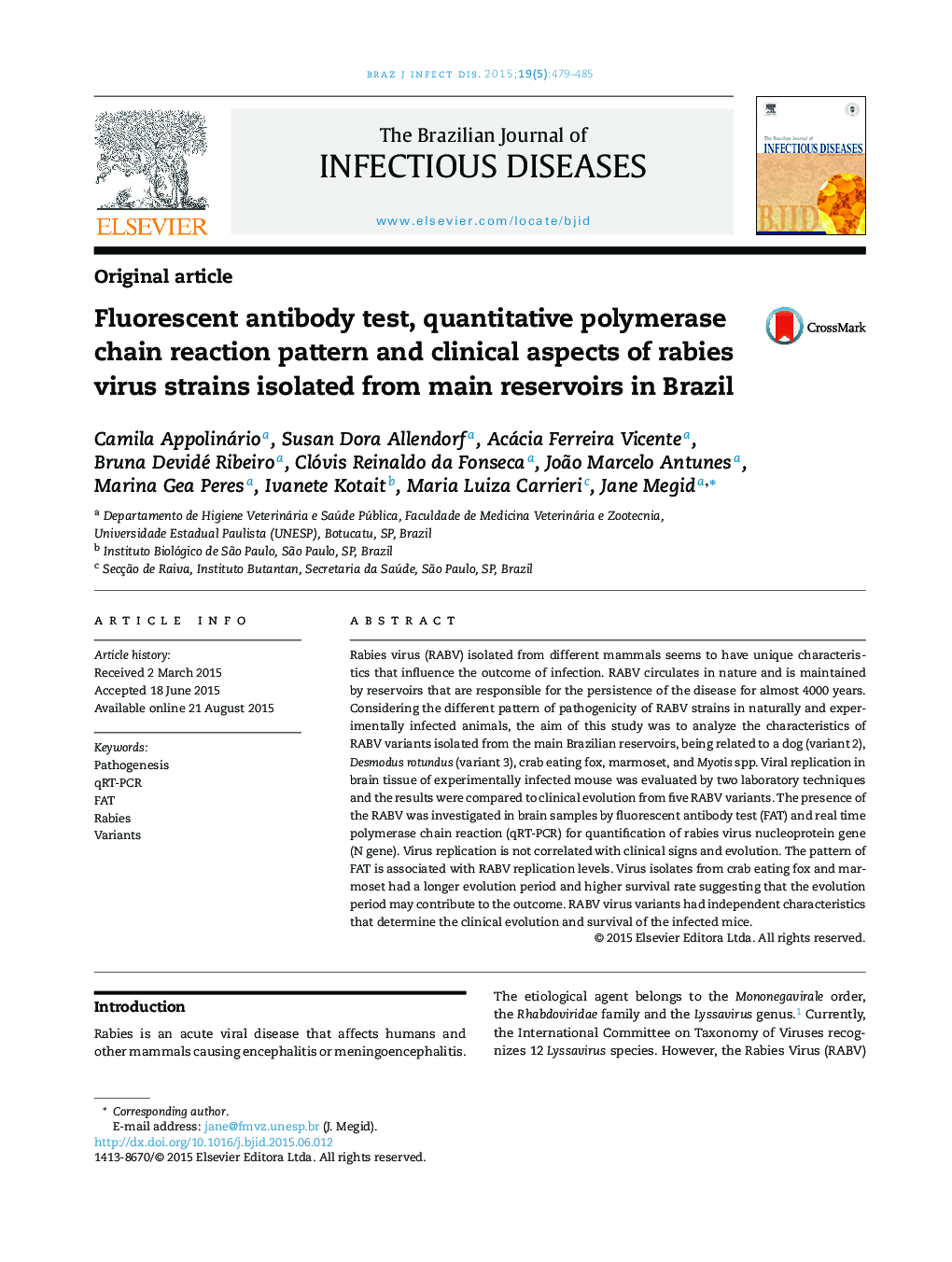| کد مقاله | کد نشریه | سال انتشار | مقاله انگلیسی | نسخه تمام متن |
|---|---|---|---|---|
| 3343802 | 1591187 | 2015 | 7 صفحه PDF | دانلود رایگان |
Rabies virus (RABV) isolated from different mammals seems to have unique characteristics that influence the outcome of infection. RABV circulates in nature and is maintained by reservoirs that are responsible for the persistence of the disease for almost 4000 years. Considering the different pattern of pathogenicity of RABV strains in naturally and experimentally infected animals, the aim of this study was to analyze the characteristics of RABV variants isolated from the main Brazilian reservoirs, being related to a dog (variant 2), Desmodus rotundus (variant 3), crab eating fox, marmoset, and Myotis spp. Viral replication in brain tissue of experimentally infected mouse was evaluated by two laboratory techniques and the results were compared to clinical evolution from five RABV variants. The presence of the RABV was investigated in brain samples by fluorescent antibody test (FAT) and real time polymerase chain reaction (qRT-PCR) for quantification of rabies virus nucleoprotein gene (N gene). Virus replication is not correlated with clinical signs and evolution. The pattern of FAT is associated with RABV replication levels. Virus isolates from crab eating fox and marmoset had a longer evolution period and higher survival rate suggesting that the evolution period may contribute to the outcome. RABV virus variants had independent characteristics that determine the clinical evolution and survival of the infected mice.
Journal: The Brazilian Journal of Infectious Diseases - Volume 19, Issue 5, September–October 2015, Pages 479–485
